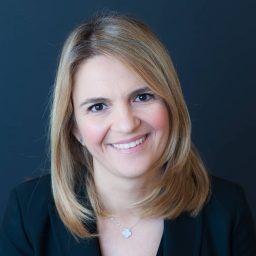U.S. National Science Foundation (NSF) SpectrumX is pleased to announce that IEEE International Symposium on Dynamic Spectrum Innovation (DySPAN) 2025 has accepted multiple papers and tutorials authored by its expert center members.
As stated on the event’s webpage, this symposium is a “premier global forum for cutting-edge developments in spectrum technology and policy” that “[welcomes] contributions from industry, academia, and government stakeholders to share insights, collaborate, and shape the future of spectrum management.” NSF SpectrumX is proud to support the event’s mission to foster innovation and drive progress in spectrum research and communications technology.
The center was notified that the following members had papers and tutorials accepted by IEEE DySPAN 2025 in February 2025:
- Bingyan Lu, NSF SpectrumX PhD student (University of Notre Dame), Caleb Reinking, NSF SpectrumX research partner (University of Notre Dame), and J. Nicholas Laneman, NSF SpectrumX center director (University of Notre Dame), co-authored “Initial Evaluation of Retrieval-Augmented Generation Approaches in Spectrum Policy Research.”
- Christopher Wahl, NSF SpectrumX PhD student (University of Notre Dame) and Bertrand Hochwald, NSF SpectrumX research partner (University of Notre Dame), Mariya Zheleva, NSF SpectrumX research partner (SUNY, University at Albany), Dirk Grunwald, NSF SpectrumX research partner (University of Colorado, Boulder), Cong Shen, NSF SpectrumX research partner (Northwestern University), Karyn Doke, NSF SpectrumX research partner (Hamilton College), and Danijela Cabric, NSF SpectrumX research partner (University of California, Los Angeles) are among the co-contributors of the tutorial “The SpectrumX Toolkit for Data-Driven Spectrum Measurement, Modeling and Analytics.”
- Randall Berry, NSF SpectrumX research partner (Northwestern University), and Michael Honig, NSF SpectrumX research planning committee director (Northwestern University), are listed among the co-authors of “Costly Measurements to Incentivize Spectrum Sharing.”
- Kangle Mu, NSF SpectrumX PhD student (Northwestern University), Zongyun Xie, NSF SpectrumX PhD student (Northwestern University), and Berry are listed among co-authors of “Compete or Coordinate? Analysis of Spectrum Sharing Strategies for Local Wireless Services.”
- Lu and Laneman co-authored “Spectrum Efficiency of Radar: A Novel Approach Based upon the Cramer-Rao Lower Bound.”
- Mehmetcan Gok, NSF SpectrumX PhD student (Northwestern University), Cabric, and Honig co-authored “ML-Assisted Chirp Detection via Beamforming for Radar-Communication Coexistence.”
- Aditya Wadaskar, NSF SpectrumX PhD student (University of California, Los Angeles), and Cabric co-authored “Satellite-Terrestrial Coexistence in FR3 Band via Hybrid True-Time-Delay Array-based Nulling.”
- Seda Dogan-Tusha, NSF SpectrumX postdoctoral associate (University of Notre Dame), Armed Tusha, NSF SpectrumX postdoctoral associate (University of Notre Dame), Muhammad Rochman, NSF SpectrumX graduate student (University of Notre Dame), Hossein Nasiri, NSF SpectrumX PhD student (University of Notre Dame), Joshua Roy Palathinkal, NSF SpectrumX PhD student (University of Notre Dame), and Monisha Ghosh, NSF SpectrumX policy outreach director (University of Notre Dame) are listed among co-authors of “Evaluation of Indoor/Outdoor Sharing in the Unlicensed 6 GHz Band.”
The center congratulates these and all other members whose research submissions have been accepted for this conference. NSF SpectrumX and its members look forward to sharing their research innovations, learning from other conference participants, and continuing to collaborate with IEEE DySPAN.
In addition to members attending and presenting at the event, it was announced on March 27, 2025 that the U.S. National Science Foundation (NSF) SpectrumX will also sponsor this event. Through these various channels of involvement, the center aims to forge strong relationships with a wider audience of leading spectrum experts.
This engagement with IEEE DySPAN 2025 continues NSF SpectrumX’s historic support and collaboration with this symposium. In 2024, IEEE DySPAN was co-located with NSF Spectrum Week, an event organized by NSF SpectrumX and held near Washington, D.C. This week-long conference brought together six major spectrum events, including a SWIFT PI Meeting, NRDZCOM4, the NSF SpectrumX Spring 2024 Center Meeting, the NSMA 2024 Annual Conference, and a WSRD Workshop on the National Spectrum R&D Plan in addition to IEEE DySPAN 2024.
IEEE DySPAN 2025 will be held from May 12-16 in London, England.
About NSF SpectrumX
NSF SpectrumX is funded by the U.S. National Science Foundation (NSF) as part of its Spectrum Innovation Initiative, under grant number AST 21-32700. NSF SpectrumX is the world’s largest academic hub where all radio spectrum stakeholders can innovate, collaborate, and contribute to maximizing social welfare of this precious resource.
To learn more about NSF SpectrumX, please visit spectrumx.org.
Contact:
Stephanie Loney, Research Communications Specialist
SpectrumX / Notre Dame Research / University of Notre Dame
sloney@nd.edu / 574.631.7804
spectrumx.org









